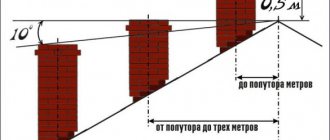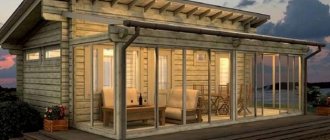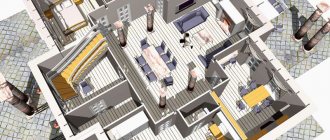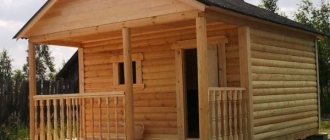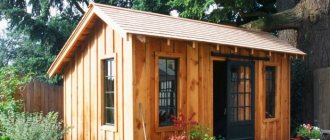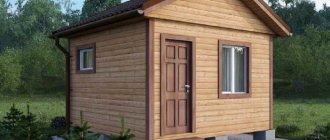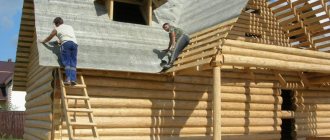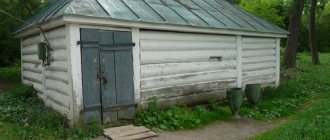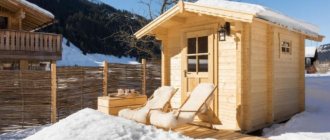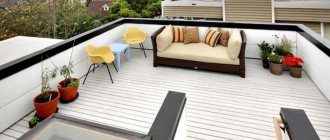Should I have a sauna at home or not? The discussion of this issue by the FORUMHOUSE editors grew into a heated argument, we began to look into it and, of course, went to look at the opinions on our forum. Most of our forum members believe that a bathhouse in the house is a whim for which you will have to pay too much.
A responsible homeowner would never do this, according to our expert users, and we share their arguments with you.
A bathhouse in the house is an increased fire hazard
Even a free-standing bathhouse is always an object of increased fire danger. When building a bathhouse, we are always extremely careful, we try to follow all fire safety rules to the letter, and when operating the bathhouse, too, but this does not always help. Even on our forum, where people’s awareness and responsible attitude towards their lives are several orders of magnitude higher than the “hospital average,” no, no, and the following questions arise:
Seni21
Yesterday my sauna burned down, of course, it was heated very hot to 120 degrees, and in order to cool it, the last steamer intensively poured water onto the heater. I saw the flame after 2.5 hours, it ignited, apparently near the pipe on the ceiling. In short, I was left without a bathhouse, the neighbors didn’t take care of it, they put out everything on time.
Now let's imagine what would happen if this bathhouse were not far from the house, but right in it.
ZYBY FORUMHOUSE Member
I have always given other arguments “against”, and now I will add one more: if it burns down, then it will be one bathhouse, and not the whole house!
bond2 FORUMHOUSE Member
In my opinion, the fire hazard, especially in a wooden house, should outweigh all the advantages of a built-in bathhouse. And we only get pleasure from walking from the bathhouse to the house, and in winter too.
Coordination of a bathhouse project in a garden plot
Any building that is being built on a site in a dacha or garden non-profit partnership and has a foundation does not belong to commercial buildings, and its design must be approved. The bathhouse is no exception to this rule. If you neglect the design and approval of the project, the object will be classified as a self-built project and will not be included in the real estate cadastre. To obtain permission, you need to collect the following set of papers:
- Statement. Submitted on the website of Rosreestr, State Services or when visiting the MFC.
- A document identifying the owner of the plot.
- Papers confirming the ownership of the territory.
- Topographical plan, which indicates all the distances from the bathhouse to the residential building, fence, well, barn, neighbor’s house and other objects. This document must be linked to the general plan of the locality.
- Cadastral plan of the land plot with size designation.
- A paper with a real estate assessment received from the BTI.
- Layout of utility networks with marks of connection points to municipal communications, if any.
- Drawing of a new building on the territory.
Drawing of the territory of a site with a bathhouse
If the design is carried out by a company specializing in such services, the owner will not have to deal with the preparation and provision of documents: all this is done by hired employees. The project itself must contain the following information:
- Description of the future building with its purpose.
- Exact dimensions around the perimeter, internal layout.
- Type of steam room, heating equipment.
- Materials used for construction and finishing, their quantity.
- Methods for supplying clean water and draining wastewater.
- Ventilation system, its type (natural or forced), power calculation.
- Removing the bathhouse on the site from the boundaries and other objects on the owner’s site and neighboring territory.
2. A bathhouse in the house is a blatant contradiction of sanitary standards
The construction of a bathhouse is regulated by several documents. Fire safety standards and distances are specified in SP 4.13130.2013, and there a lot depends on the materials, although it is clear: the further the bathhouse is located from the house, the safer it is.
Sanitary standards are written down in SP 53.13330.2011 (SNiP 30-02-97), and it clearly states:
There must be a distance of at least eight meters between the bathhouse and the house.
Palekha FORUMHOUSE Member
According to SNIPs from 1934, there is a bathhouse in the far corner of the yard.
Fire safety requirements
Regulated by the following documents:
- 69-FZ - general fire safety requirements in the Russian Federation.
- 123-FZ - technical regulations of fire safety rules.
Before starting construction, it is important that the construction project is agreed upon in accordance with SP 11-106-97. This will allow you to keep under control the level of fire safety of the building itself and the equipment inside it (stove, chimney).
As for the distance of the bathhouse from other construction sites, the standards are similar to those specified in SNiP.
The main focus of fire safety in a bathhouse is on the correct layout and installation of the stove and chimney. This will avoid the risk of fire and protect the life and health of people inside the premises.
The key requirements include the following:
- Availability of fire extinguishing equipment (fire extinguisher) in the premises.
- Any surfaces that will come into contact with the stove must be fire resistant or have a protective coating.
- The maximum heating temperature of the furnace walls is up to 120 degrees.
- The first test run of the furnace is carried out in the presence of a representative of the fire service. After this, a fire safety report on the product is drawn up.
If the owners decide to perform a test run themselves, they need to take into account several points:
- All elements must heat up evenly. If some of them are too hot, you will have to apply additional thermal protection.
- Particular attention is paid to traction. When lighting, smoke should not leak through cracks in the brickwork and enter the room.
If during operation of the stove it is discovered that there is no draft, then it is necessary to clean the chimney of soot and other debris.
A bathhouse in the house is a constant risk of excess moisture
Good architects always try to dissuade the developer from the dubious and, to put it bluntly, very hemorrhoidal “bathhouse in the house” solution, also due to emerging architectural and construction restrictions. Everything needs to be designed, calculated and built in such a way as to avoid excessive moisture, otherwise we encounter condensation even in the residential area.
IzbushechnikFORUMHOUSE Member
This is an eternal struggle against steam and mold! The bathhouse is always a separate building!
A built-in bathhouse several times increases the risk of the insulation in the walls and roof getting wet. And this is a very expensive risk, because when doing a vapor barrier, you will need to do a very inexpensive test for air permeability (blower door), and not only in the bathhouse, but throughout the entire house.
Pivis FORUMHOUSE Member
Lower door test? In our region it costs 300-350 euros per time.
Visiting rules
To benefit from steam room procedures, you need to know how to steam properly.
There are not so many such rules and remembering them is not at all difficult:
- For the first entry into the steam room, 5 minutes is enough.
- Before entering the steam room, you need to douse yourself with warm water and wipe yourself dry with a towel. There is no need to wet your head.
- You need to start steam procedures from the bottom shelf.
- After 10 minutes in the steam room, you need to get out, douse yourself with water and rest for about 7 minutes.
- After resting, you can continue to steam, patting yourself with a broom.
- It is not recommended to make more than three visits to the steam room and stay in it for more than 15 minutes at one time.
- Drink water between sessions.
- After the bath, take a cool shower or plunge into the pool. A good sign during cooling will be a pleasant tingling sensation throughout the body.
- Enter the parameters of your sauna or simply leave a request
- We will receive an estimate for your project from each of our contractors
- We will choose the best offer and contact you
- You will get a sauna at the best price
Your promo code: “Sauna for you”! Tell it to our employee and the surveyor’s visit will be free for you.
A built-in sauna increases the ventilation requirements in the house
If you want to build a bathhouse right in the house, you need to be prepared for the fact that the living and bathing areas will require separate ventilation systems (each zone has its own microclimate), but at the same time they will have to work in harmony. Obviously, this is also difficult, and also quite expensive.
There is also such a thing as the need for burst ventilation through the door and window: the steam from the steam room must go somewhere, and definitely not into the house. That is, this issue will require a separate solution.
A bathhouse in the house complicates engineering solutions
The Russian bathhouse is a complex engineering structure, the ventilation system of which faces a number of tasks:
- it supplies combustion air to the furnace;
- it directs heated air along the ceiling from the stove to the shelf;
- it directs fresh air for the steamed to breathe;
- it removes exhaust air from the steam room;
- she performs burst ventilation;
- she dries out the steam room after using it.
It is much more difficult (and more expensive!) to fulfill all these engineering requirements in a built-in bathhouse than in a free-standing one.
Sauna gas stove - pros and cons
Almost every person living in a private home dreams of having their own quality bathhouse.
But, as you know, building a bathhouse is not a simple matter, requiring certain knowledge and skills. As practice shows, foreign construction technologies have recently been increasingly used in the construction of bathhouses. Modern steam rooms have changed significantly both in appearance and in a number of characteristics; they are not at all similar to the original Russian baths. The classic stove-heater, which requires the creation of a foundation and the allocation of a considerable area, is becoming a thing of the past. Today, as a rule, preference is given to innovative equipment, which allows you not to think about the operation of all devices.
At the moment, the market is dominated by gas metal stoves, used as special equipment for saunas, hammams and Russian steam rooms.
Design features of gas furnace equipment
Installation requirements
Advantages
Flaws
A bathhouse in the house is less comfortable than a free-standing one
This point practically eliminates the only tangible “plus” of a built-in bathhouse. Well, yes, you won’t have to go into the house with a wet head in the cold, and for some this will probably be worth a lot; but how many unpleasant “buts” appear here!
- “But” No. 1: a separate bathhouse is always more comfortable. There you can provide a spacious relaxation room, a more comfortable steam room, and a pleasant nook for storing firewood.
- “But” No. 2: a separate bathhouse is always more private. There is less risk that you will catch the eyes of guests and household members when you jump from the steam room into a snowdrift or into a swimming pool.
- “But” No. 3 : in a separate bathhouse we don’t disturb anyone!
TarynFORUMHOUSE Member
My bathhouse starts at 6 pm and lasts until 1-2 am (guests). And this is inevitable noise. And again, after the steam room, where can you go to sit and drink tea?
Materials used to build a bathhouse with your own hands
To build a bathhouse, coniferous trees are usually used, most often pine and spruce. This structure has healing properties and has a beneficial effect on the human body. Spruce and pine wood has multiple advantages, the main one of which is that it does not absorb moisture well, so it is ideal for building a steam room. In addition, a building made of pine and spruce is highly resistant to mold, and when it is heated in the air, the accumulation of beneficial phytoncides increases, which has a good effect on the respiratory tract.
Wood not only has healing properties, it has high thermal characteristics, such as durability, strength, ease of processing, and most importantly, such a material is widely available and low in price. Do-it-yourself frame or log construction is the most optimal solution for those who want to make a reliable, beautiful and comfortable steam room on their site.
The quality of a built-in bath is always worse than a free-standing one
A combined “house + bathhouse” object is more difficult to make efficiently, in compliance with all requirements, than two separate objects. Whatever one may say, it is impossible to fulfill all the requirements (and real sauna lovers always have a lot of them) in a built-in sauna. Any true connoisseur will tell you that a bath in the house is not only dangerous, but also frivolous.
The bathhouse should be located separately, in a pleasant place on the edge of the site next to a pond or a man-made pond - everything else is a Chinese fake.
In the end, we didn’t move out of town to be content with half measures.
What are the consequences of not registering?
The new bill is effective from March 1, 2021. From this date, all buildings that are capital, but have not passed state registration, are considered unauthorized.
How does this threaten the owner: it will not be possible to install sewerage, electricity, water; a plot on which there are such buildings cannot be sold, changed, bequeathed or donated.
The owner will have to legitimize the structure. It will be necessary to prove that it complies with established standards. But in some cases this is not possible. For example, making a real estate item movable property. You will have to go to court and order an examination. The owner may be required to demolish the structure at his own expense. If this requirement is not met, a fine may be imposed.
Bill No. 301854-7 on liability for non-compliance with the requirements of the Civil Code establishes the following fine amounts:
- from 2000 to 5,000 rub. – initial amount;
- in case of late payment, the amount of the fine will increase from 20,000 to 50,000 rubles;
- The demolition of the building is carried out at the expense of the owner of the dacha plot.
The built-in Finnish sauna was not invented because of a good life
And, as the members of FORUMHOUSE say, they are far from new to this life, “under favorable circumstances, you don’t need to do this for yourself.”
AlexeyL Member of FORUMHOUSE
As far as I know, the “dry sauna” was invented by the Finns in the middle of the last century solely out of poverty, during the war and after the war. Particularly because it is easier to build a dry sauna into a city house without waterproofing. Then, for the same reason, the idea was picked up by businessmen in perestroika Russia. Under favorable circumstances, there is no need to do this for yourself.
The “native” Finnish sauna is not dry at all. It is just wet enough, with brooms and a constant supply of a ladle to the heater. Of course, in a Russian bath the humidity/temperature ratio is higher, but in an authentic Finnish sauna “the water also comes in liters.”
Foundation
The choice of foundation for a bathhouse must be approached responsibly, because the stability and service life of your building will directly depend on its strength. To build a bathhouse with your own hands, you can make several foundation options:
- strip foundation. This type can be considered universal - it can be built both for baths built of stone or brick, and for wooden baths.
- columnar type foundation. This type can be suitable for any baths built of wood . The construction of such a foundation allows you to significantly reduce the cost of building a Russian bathhouse with your own hands.
- sand foundation. This type of foundation can be erected for a small, one-story building on non-heaving soil with a low groundwater level. The construction of this type of foundation does not require large expenses for materials and minimizes excavation work.
If you plan to equip your bathhouse with a brick stove weighing more than seven hundred and fifty kilograms, then its construction must be carried out on a separately constructed foundation.
